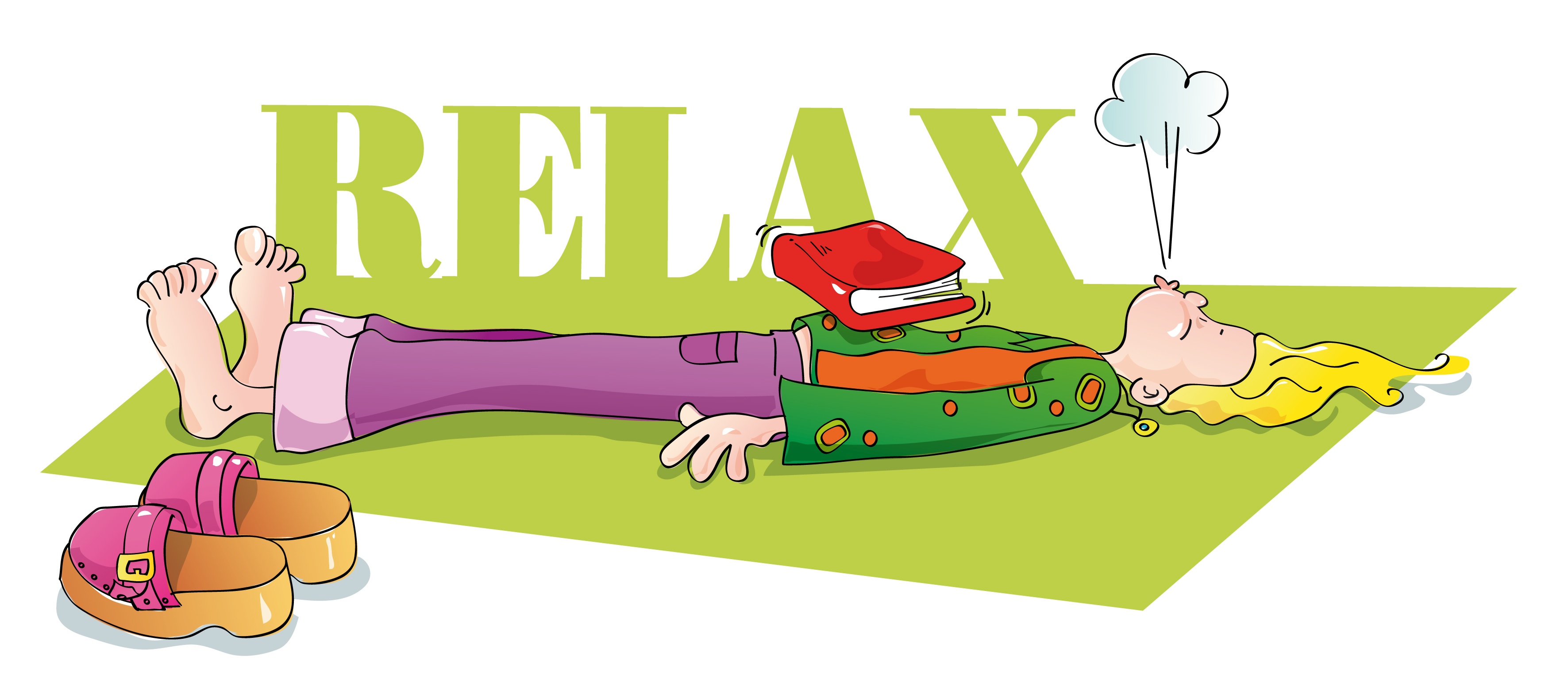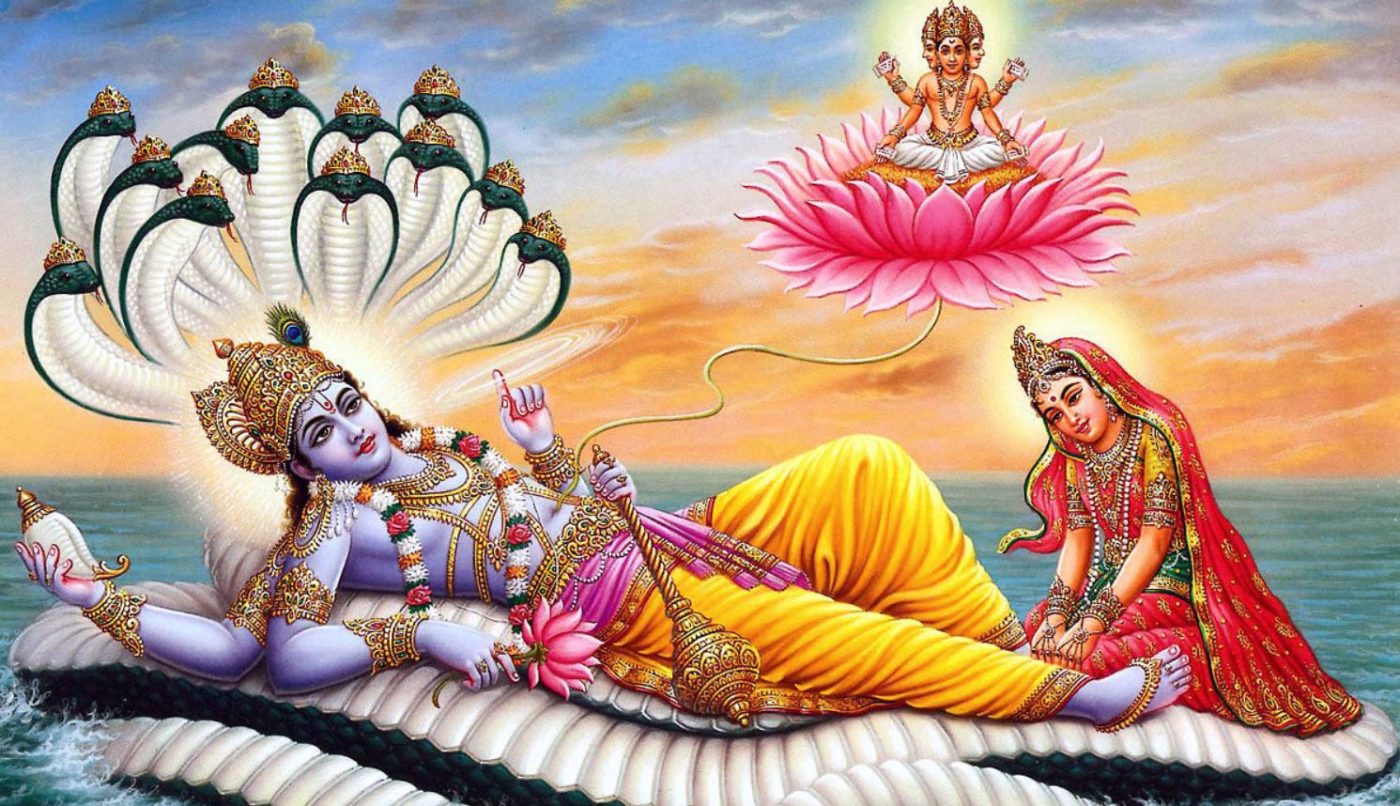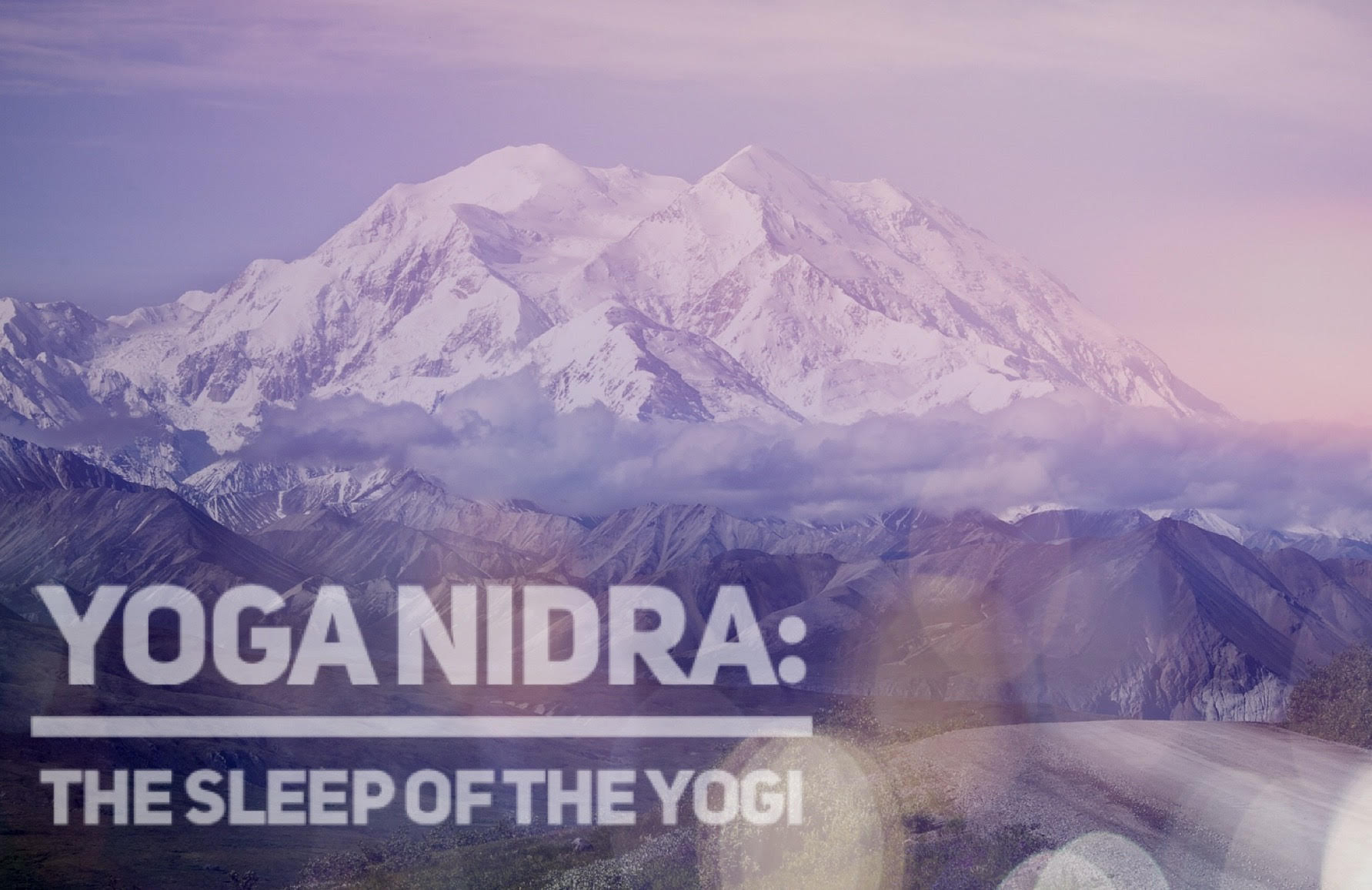Yoga Nidra (योग निद्रा) (Deep Yogic Relaxation) is an integral part of every yoga class that I teach. Following the Integral Yoga tradition, the style that I practice and teach, Yoga Nidra is practiced right after the asana (physical postures) segment and before the pranayama (breathing techniques) session.

Yoga Nidra
What is Yoga Nidra?
The Sanskrit word “nidra” means sleep. Yoga nidra literally means yogic sleep which is not the same as biological sleep. At any time, we are in one of the three states known as “jagrita” (waking), “swapna” (dream) and “sushupti” (dreamless, deep sleep). In the deep sleep state we have no awareness and the mind and body are cut off from any outside or inner influence. In yoga nidra, from the point of view of relaxation, it resembles the state of deep sleep; however, we maintain full awareness during yoga nidra. In that sense, yoga nidra can be considered a state somewhere in between the waking and deep sleep states.
The credit for popularizing the modern practice of yoga nidra is usually given to Swami Satyananda of the Bihar School of Yoga in India. As mentioned in the book “Yoga Nidra” written by him, he developed the technique based on the Tantric technique called “Nyasa” (placement). Based on these concepts from the tantras, he began teaching this practice in the early 1960s. His book, “Yoga Nidra”, provides a detailed description of the concepts and the practice of yoga nidra. In this book he writes that one hour of yoga nidra can equal four hours of deep sleep in terms of relaxation!

Lord Vishnu in Yoga Nidra
Even though the practice of yoga nidra, as done today, is of recent origin, the word “yoga nidra” is found mentioned in ancient texts like some of the Puranas – Vishnu Purana, Shiva Purana, Devi Mahatmya etc. In some of the parables mentioned therein, Lord Vishnu is presented as lying on the body of the Ananta Naga or Shesha Naga, the thousand-hooded serpent, that is supposed to support and hold the universe in balance. Lorn Vishnu is mentioned as being in the state of Yoga Nidra. It is not clear as to what that state truly represents. In other stories, Lord Brahma is supposed to go into the state of yoga nidra when this creation is dissolved back into the state of “nothingness’ at the time of “pralaya”. There are several other mentions of celestial beings going into the state of yoga nidra.
In the current incarnation of yoga nidra, the students usually lie down on their back or any other supine position that is comfortable for them. Then the yoga instructor guides the students through a sequence that involves first tensing the body parts and then letting the body parts relax through progressively moving the awareness from one body part to the next. This sequence leads to a state of deep relaxation and the students are allowed to remain in that state for several minutes. In the yoga nidra practice, the students go through sequentially body, breath and mental awareness, in that order. There is no effort to put any kind of control on the mind. The students are directed to simply observe the breath and any thoughts that arise in the mind without getting involved with or attached to any specific thought. The practice helps bring about the state of pratyahara which helps withdraw the mind away from any influence from the five senses.
In most yoga classes that are taught in yoga studios or health clubs, rather than going through the full sequence of yoga nidra, there is a brief period of relaxation which is added toward the end of the class. This relaxation is usually called “shavasana” even though the word “shavasana” is the name of the pose, not the practice of relaxation. The word “shava” means a dead body or a corpse. Shavasana is thus the pose in which one lies down flat on the back in a relaxed manner resembling a corpse, hence the name.
In yoga nidra the mind becomes highly receptive to any autosuggestions. One of the practices within yoga nidra is that of making a ‘sankalpa’. A sankalpa is a resolve or a positive affirmation about a change, short term or long term, that you want to bring about in your life. While you are in the state of relaxation, you make the sankalpa and repeat it a few times in the mind. This can bring about powerful changes in your life.
Why do we need to relax
Our hectic lifestyle these days puts a lot of stress and strain on our body and mind. By the end of the day, we are usually drained of physical energy and exhausted mentally. To add to all that, many of us have poor diet and sleep habits which adds to a sense of physical and mental fatigue. Our mind in general is not in harmony with our environment and with the people that we interact with. Our thoughts and behavior are governed by our deep-seated samskaras (past impressions) that are lodged in our deep subconscious levels. Due to these past impressions we have strong likes and dislikes. In our day-to-day experiences, whenever we encounter something that is against our liking or our own established pattern of thought and behavior, we feel stressed. This stress keeps accumulating over time and leads to different ailments – physical, mental and emotional. Thus, there is a great need to learn how to relax the body and the mind.
When we talk about relaxation, sleep is the first thought that comes to mind. However, as we all know, most of us do not get either the full quota of sleep that we need, or the sleep is disturbed. Due to constant mental activity, an overload of worries, stress and anxiety, we are unable to get adequate and sound sleep and we usually feel tired even after a full night’s sleep. Many of us remain sleep-deprived for long periods of time. Lack of proper sleep also results in more physical fatigue and mental stress.
It is thus clear that in addition to sleep we need some other specific techniques that can help us relax and free us from mental tension, anxiety etc. We all know that when we are physically and mentally relaxed, we can focus more, be more productive and efficient in our day-to-day life activities. This is where the practice of yoga which includes specific techniques for deep relaxation (yoga nidra) can play a significant role in helping us relax and rejuvenate.
Worry, stress and anxiety lead to chronic disease
Modern lifestyle, with heightened demands on both work and family life, creates states of anxiety, stress, worry, and fatigue. When we are stressed, the sympathetic nervous system kicks in which brings about the “fight or flight” response. When we are relaxed, the parasympathetic nervous system is activated which results in calming the mind and relaxing the body. Unfortunately, majority of the time we are in the state where the sympathetic nervous system is active and we are in a state of “high alert”. This leads to a self-perpetuating sense of emergency, stress, and anxiety. Prolonged periods of this state can drain psychological and physical reserves. Ultimately, this state leads to exhaustion and collapse, the predisposition to chronic mental and physical ailments. Modern medicine confirms that many of the common ailments like hypertension, diabetes, breathing issues, even cancer etc. can be traced back to prolonged states of stress and anxiety.
The key to a healthy, long life is to make relaxation, rather than stress, the baseline from which you operate. By learning how to relax the mind and body consciously, we can operate from a self-aware, mindful, relaxed, and grounded state, and find more positive and creative ways to better manage the constant flow of life’s challenges.

Yoga Nidra1
Why practice Yoga Nidra?
When people join my yoga classes, I have them fill out a registration form. One of the questions in the form asks them the reason why they would like to practice yoga. One of the most common reasons mentioned is "stress" as they would like to learn how to cope with stressful situations in life and how to stay cool and calm in this very hectic lifestyle.
When people join yoga classes they also complain of pain in the neck and shoulders, hips etc. These pains are nothing but a physical manifestation of the stress that they carry in their minds. As mentioned above, the usual sleep is unable to bring deep relaxation to their minds. The result is that the stress and its undesirable effects keep mounting. Their mind is working when they are trying to sleep while they seem to be sleep-walking when they are trying to work! Most people complain that they are so busy that they have no time for relaxation.
This is where yoga nidra gains importance as it can provide deep relaxation in a short time. In fact, once you start practicing yoga nidra, your mind becomes much calmer and even the quality of your regular sleep improves. This can help you recuperate mental and physical energy which otherwise keeps getting depleted without proper replenishment. Another positive effect of deep relaxation is that it can improve your willpower and help you attain your goals more efficiently.
Asana (Posture) for Yoga Nidra
The most common asana for yoga nidra is called "shavasana" (corpse pose). The word "shava" in Sanskrit means a dead body or a corpse. In this asana, you lie down flat on your back and allow the body to find its own naturally relaxing posture. You may make adjustments to the body – spreading the feet almost the width of the yoga mat, keeping the hands slightly away from the body with the palms preferably facing up, head in the center with the eyes closed. If your neck feels uncomfortable, you can use a thin pillow under your head. Similarly, if there is pain or discomfort in the back, you may place a bolster under your knees.
If you are not comfortable lying flat on the back, you may turn the body to one side and practice yoga nidra in that position. Similarly, during pregnancy also it is recommended that you lie on your left side for deep relaxation.
You should have to make no effort whatsoever to stay in that position. Once the body is in the most naturally comfortably position, you should try to stay in that position perfectly still for the entire duration of the yoga nidra routine.
Benefits of Yoga Nidra
- Activates the parasympathetic nervous system which helps attain a state of deep relaxation.
- Brings about relief from stress and helps deal with stressful situations more effectively.
- Can reduce your need for regular sleep.
- Helps in curing some of the common ailments like high blood pressure, insomnia, asthma, allergies etc.
- Rejuvenates the body and brings about a sense of joy and total well-being.
- Brings about a sense of clarity to the mind.
- Brings relief from aches and pain in the body.
- Helps induce a state of meditation.
- It works almost like a psychiatric tool in dealing with psychological problems like fears, phobias, deep-seated complexes etc.
For detailed instructions on the practice of yoga nidra please visit my blog post here.
Recent Comments